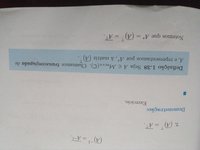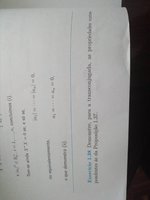Let Am,n be any matrix
If (A⋅B) = A∗⋅B∗ and (A∗)∗=A ,
Then (A∗⋅A)∗ = (A∗)∗⋅A∗ = A⋅A∗
But then also
(A∗⋅A)∗=(A⊤⋅A)⊤=(A∗⋅A)
What am I doing wrong?
EDIT: Also, where can I find a comprehensive guide for the forum notations?
Thanks
If (A⋅B) = A∗⋅B∗ and (A∗)∗=A ,
Then (A∗⋅A)∗ = (A∗)∗⋅A∗ = A⋅A∗
But then also
(A∗⋅A)∗=(A⊤⋅A)⊤=(A∗⋅A)
What am I doing wrong?
EDIT: Also, where can I find a comprehensive guide for the forum notations?
Thanks
Last edited:




